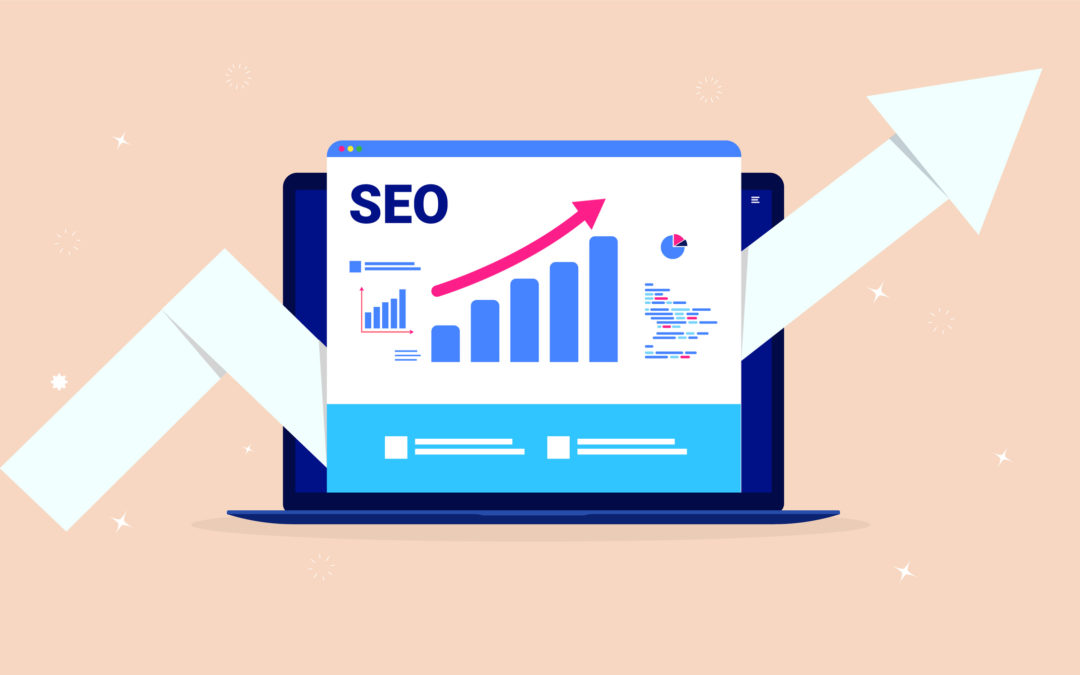
How To Attract The Very Best Candidates For Your Small or Medium Sized Business
When you own and run your own business, spending much of your time working toward its success, you realize the importance of building a team of employees who will support your venture with enthusiasm and drive. The process of attracting, finding, and hiring qualified employees needs to be approached methodically and carefully, so that you will be successful in building a productive team to support your business.
You’ve tried job boards. You’ve tried word-of-mouth. As a small or medium sized business owner, you may wonder what campaigns or methods will actually work best for attracting excellent job applicants. This guide will help you explore the options and processes that yield the best recruitment results — and that go beyond the job board.
Social Media As a Recruitment Tool
There’s a reason social media is sometimes referred to as the modern-day town square — it’s all about spreading messages to large groups of people at one time. If your company has a social media channel – whether Facebook, Instagram, X, LinkedIn or all of those — one of the first, no-cost steps is to publish a post letting people know that you have an opening on your team. This can be particularly beneficial if you already have a strong number of followers on your social media channels.
Join Social Media Groups
According to Scion Insights, recruiters can even join relevant groups and communities to be in the same sphere as potential candidates, which is a great way to organically build a community of people who may be strong additions to your business.
Learn LinkedIn – An Important Social Media Platform for Recruitment
While it is definitely worthwhile to post a job opening on Facebook and Instagram (and can often be successful, depending on the type of company you own), one of the very best social media platforms for recruitment is LinkedIn. LinkedIn provides access to an extensive network of professionals. Running a LinkedIn recruitment campaign allows filters to be applied to industries, locations, and even salary ranges. Companies and individuals on LinkedIn can indicate in their profile, bio, and feed that they are hiring for a role. Professionals looking for a new role can indicate that they are looking for work and will often scour LinkedIn posts in their chosen area and industry on an almost daily basis.
LinkedIn also serves as a great platform for recruiters and candidates to initially connect. If a professional is interested in an opening, they can easily comment or directly message the recruiter with further information — and vice versa.
Use Hashtags Wisely
When posting a job on LinkedIn, remember the importance of using relevant hashtags as tools to categorize specific content. In addition to general recruitment hashtags, like #hiring and #interviewing, use industry-specific hashtags, so potential candidates will know who you’re looking to hire.
Interact on Social Media
If you see a candidate with interesting and relevant experience, you can strike up a conversation by directly messaging them on LinkedIn or Facebook. Sending a personalized message, such as pointing out something on their LinkedIn bio that piques your interest, can lead to a meaningful conversation and submitted application.
Embrace Geofencing and Google Ads As Recruitment Tools
Utilize Google Custom Intent Audience
According to Google, a custom intent audience refers to a specific group of potential customers identified by their online behavior that shows they are interested in products or services similar to what you offer. As an employer, you can use Google custom intent audience ad campaigns to target people who are currently searching for jobs like the ones you are offering. Targeting options include relevant keywords, competitor URLs, and even competitor apps, which helps employers reach the job candidates.
Utilize Geo-Fencing
Messaging only matters when it is reaching the correct audiences — which is why geofencing is a vitally important tool to use when attracting the right employees for your business. A geofence is a virtual perimeter for a real-world geographic area.
You can develop great digital ads that communicate your company’s open position and use geofencing to reach people in your area who may be interested.
- Use relevant keywords in your ad copy to ensure your ads appear in searches related to the job position.
- Cast a geographic net that makes sense. Depending on how many people you think you need to reach, determine a geofencing radius that will reach enough potential candidates in the locations where the job is available. Examples of fences for recruitment ads include:
- Your competitors – Their employees have the skills you want, and may be interested in a new employer.
- Testing centers – Locations like CDL testing centers can be great places to find job candidates with the skills you want.
- Schools – Colleges that offer the training your employees need, like CNA certification, are a great option to fence.
- Write compelling and concise ad copy that highlights key job details and benefits to attract the right candidates.
Write Engaging Job Descriptions
The recruitment, interviewing, and hiring process is a two-way street. While you are looking for the best candidates, remember that the best candidates are being particular as well. When candidates are searching for jobs, whether they’re browsing or actively and regularly applying, the copy that goes in a job description is the first impression they get of the role, the company, and the people that they would be working with. Therefore, it’s critical to write copy that is smart, detailed, and appealing to the type of people you’d like to hire.
So, what exactly should you include in a job description?
Outline Responsibilities and Expectations
First and foremost, potential candidates will spend more time reading a job description if they see the list of responsibilities and expectations are aligned with their skills and experience. Be honest about what you’re looking for — but don’t get too far into the details. In an interview or follow-up conversation, you can discuss the minute details. According to CIO, an extensive list of requirements, even if you call them preferred qualifications, isn’t always the best idea. Instead, omit expectations for specific or advanced degrees that are not truly necessary to the role.
Showcase Company Culture
Now more than ever, candidates on the job hunt are interested in learning more about what a company’s culture is like. According to statistics surrounding recruitment featured in TeamStage, company culture is an important factor for 46% of job seekers. More specifically, married candidates value culture more than their single colleagues, and 94% of entrepreneurs and 88% of job seekers say that a healthy culture at work is vital for success.
It’s clear many candidates want to know about your company’s culture. But what exactly does that mean? According to RecruitingDaily, including information about your company’s mission, goals, and values in a job description can give them a better sense of what it’s like to work at your organization and how they’ll fit in at the company. A small or medium business with an entrepreneurial spirit can be a major positive for certain candidates.
Do you value flexible working hours? Hybrid schedules? Vacation time? These can all catch the eye of top candidates who know what they value as well.
Feature Amenities and Benefits
Perhaps even more important than highlighting your overall company culture is a list of the amenities and benefits that your employees can expect from the job. Ongig has an ultimate list of 60+ job description benefits to consider featuring if they are relevant, including health insurance, retirement savings plans, paid time off, parental leave, professional development opportunities, education assistance, volunteer opportunities, and more.
According to IBM, workers placed work-life balance (51%) and career advancement opportunities (43%) at the top of their list of priorities, with compensation and benefits (41%) and employer ethics and values (41%) following close behind.
According to LinkedIn, salary, career growth, and meaningful work are the top three priorities when deciding to take a new opportunity.
Use your job description copy as an opportunity to feature what makes your company such a great place to work.
Highlight Potential Career Paths
Not only do you want to attract fantastic employees – you want to retain them as well. You’re more likely to have excellent team members stay on your team if there are clear opportunities for career advancement and professional development. For extra-motivated candidates (who you want on your team), featuring this on the initial job description will be an extra draw. Mention in a job description specific professional development opportunities – such as paid courses or the ability to attend workshops or conferences – and use this as a talking point during an interview to further sell a candidate.
Be Clear and Straightforward
It will save everyone’s time if you are honest and upfront in the job description copy. Are you looking for an employee who is in the Lancaster area full time? Clarify that in the job description. You may get fewer overall applicants, but more of them will be worth an interview when the expectations of location, hours, and the type of work is clear from the very beginning. If you are honest with candidates in the application and hiring process, it will establish a basis of trust throughout the rest of the working relationship.
Highlight Company Successes
Top candidates prepared to bring success want to know that they will be working with equally motivated colleagues. Highlight a recent win or point of pride for your company — this can also be a great point of discussion and elaboration in a future interview.
Embrace SEO Words and Action-Oriented Language
According to Predictive Index, it is important to write a job description that will get noticed by search engines. This means skipping tired terms like “rockstar” that people don’t actually search for when job hunting. Instead, use words and phrases that will excite the type of candidate you want to hire. Action-oriented words, like “plans,” “coordinates,” and “organizes,” can positively connect with people who have been spending the whole day browsing job descriptions and can give them more insights into what their work days would look like.
Use Photos For Authenticity
In addition to writing genuine copy that connects with job seekers, including photos in a job description can pique job seekers’ interest. However, avoid the use of stock photos because they do not provide insight into your company’s culture. Instead, use real photos of your current team on the job or volunteering together. This glimpse into life at your company will increase candidates’ trust and interest. Using photos can also increase engagement and help your company stand out from other businesses looking to hire.
Use Print Marketing To Your Advantage
The best way to recruit is through a varied but strategic approach. In addition to utilizing the digital tools discussed above, remember that print marketing, especially for small and medium sized businesses in Lancaster, remains a remarkably effective way to reach job seekers.
LNP hosts spring and fall jobs every year, attended by over 600 job seekers, and, at each fair without fail, job seekers bring physical copies of the print newspaper as a reference..
The following print promotions are great ways to reach and make an impact on job seekers:
- Daily LNP newspaper —we deliver to 40,000 households daily, many of which may be passive job seekers or may know people who are job hunting
- Front page placements—we run multiple ads on the front page of LNP to reach both active and passive readers.
- Classified section—we run ads on the front page of classifieds as well as a section within.
- Pocket—this publication is delivered to over 80,000 LNP non-subscribers throughout the county. With an ad in Pocket and in LNP, you can reach almost every household in Lancaster.
When you are able to successfully campaign for job applicants you will be able to prove to potential candidates that you care about hiring the right person for the job. Most importantly, this approach will increase your chances in hiring a candidate who is the perfect fit for your business.
Connect with LNP Media Group today to optimize your marketing and recruitment strategy to keep your pipeline filled with applicants and decrease your open-to-hire time. LNP Media Group will provide you with campaign reports and keep you updated every step of the way. Call 717-291-8831 or click here to contact us.
TL; DR: A varied but strategic approach, including social media, geofencing, print advertising, and compelling copy with authentic photos will help you reach, attract, and retain the best candidates for openings at your small or medium sized Lancaster County business.







